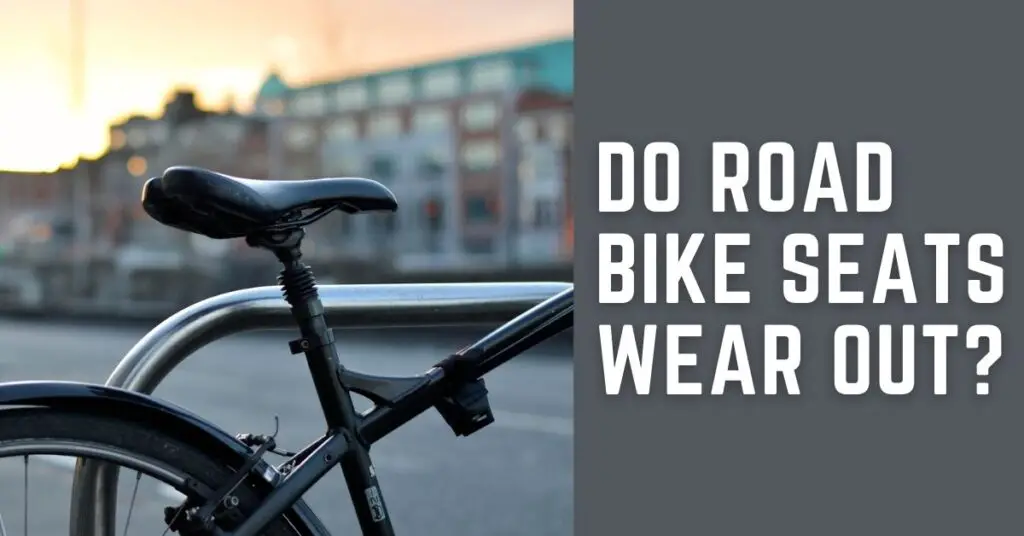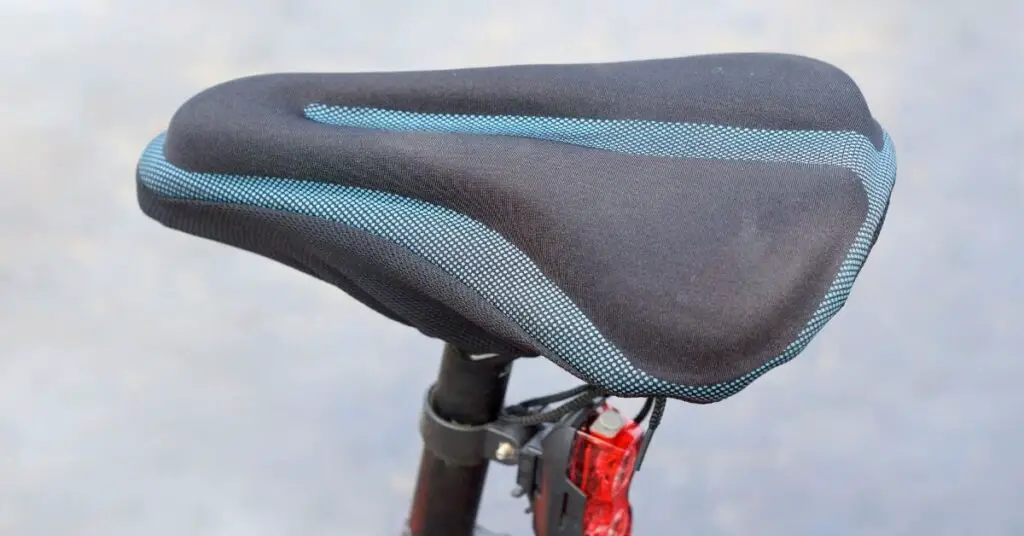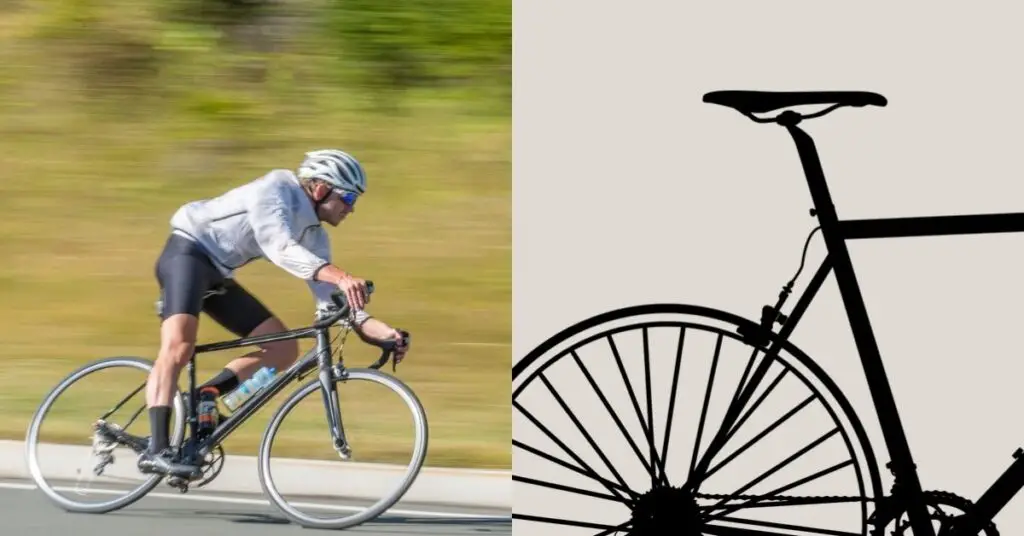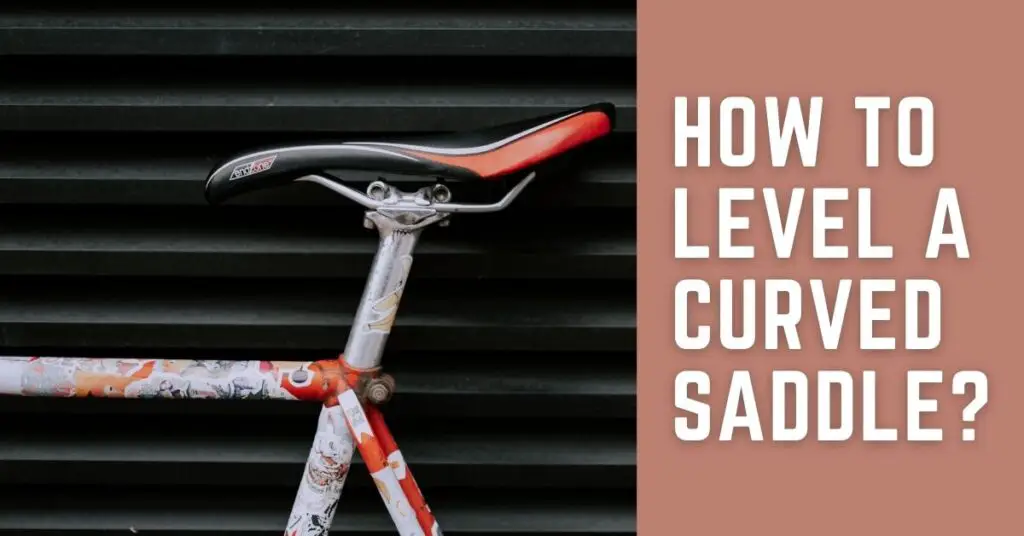Of course, when you have found the perfect saddle for your road bike, you’d hate the idea of it wearing out and needing a replacement, but this is inevitable for any seat.
A bike saddle takes most of your weight on the bike and helps you control the bike. A bike component as crucial as a bike seat (which controls your comfort) needs to be taken well care of.
This article delves into road bike seats and answers your questions on when they wear out and need replacing.

Do Road Bike Seats Wear Out?
Yes, they do. All bike seats eventually wear out, and the seats in road bikes are not any different. Actually, all the parts of a bicycle eventually wear out and require repair or replacement, so this is something you must consider as a cyclist.
What Causes Road Bike Seats to Wear Out?
The number one cause for anything to wear out, not just road bike seats, is regular use. When you use a thing regularly, it slowly loses its efficiency and integrity and wears out.
This is the same in Road bikes. Everyday use of your bike seat will make it wear out eventually.
Some other reasons why road bike seats wear out include:
1- Cracked and torn saddle covers. This can affect the components of the bike saddle and affect their efficiency
2- Frequent exposure to rain and sun will make the elements of your saddle degrade faster.
3- Age. All things wear out and become ineffective with time and regular usage.
4- Accidents. Many cyclists get into accidents, even professionals. However, this can negatively impact the structure of your saddle and make it deteriorate quickly.
5 Signs That You Need to Replace Your Road Bike Seat
Apart from understanding why your road bike seat is worn out, you should be able to identify when it’s time for you to replace the saddle on your bike. There are various signs that your saddle will show or that you will feel when using it.
Here are five of these signs:
1- If the saddle cover or your road bike is cracked, and the protective material is peeling or falling off, then you need to replace it. Otherwise, It can cause thigh chafing and discomfort.
2- If you had an accident with your road bike, and the saddle isn’t fitted or functioning correctly, you should take it to a repair and will likely have to replace it if the saddle has splinters or is twisted.
3- Significant damage to the saddle. This can be a result of anything, a fall, an accident, someone with an unsupported weight using it, etc. A damaged saddle can no longer offer you proper support when cycling.
4- When the gel or foam padding in the saddle has degraded and deformed. This means that your road bike saddle is no longer efficient and puts your safety at risk.
5- When the saddle is no longer working efficiently for you, then it is time for a change. Things like a shaking saddle or recurrent lower body pain when cycling can indicate that your saddle is no longer right for you and needs to be replaced.
How Long Do Road Bike Seats Last?
The amount of time that your road bike seat would last depends on whether you use the bike regularly, how regularly you maintain the bike, your bike storage, etc. However, we will assume that the bicycle is in optimal condition to estimate how long the saddle will last.
Road bike saddles have a lifespan of five to six years, at which point you should change them, regardless of aging signs or lack of damage. A professional road cyclist should replace the saddle after approximately 6000 miles of use (10,000 km) and that beginner or casual riders have a longer lifespan for their saddles, that is 9,300 t0 12,400 miles (15,000 to 20,000 km).
Although this lifespan does not mean the saddle will no longer be functional, it does mean that the efficiency and support of the saddle will begin to decline, and you should start looking for a replacement.
Different Types of Road Bike Seats?
The saddles in road bikes are designed to be slim, minimalist, and very light to provide maximum efficiency to the cyclist. The best models of this type of saddle are usually made with carbon fiber shells and titanium rails and typically have little to no padding.
The road bike saddles are divided into types by the major design of the saddle. Therefore, the types of road bike seats include:
1- Saddles with Cut-outs
These kinds of road saddles are designed to relieve any pressure placed on the soft tissues of the cyclist’s groin area. With the intensity of road bikes, especially when used for racing, it is very helpful to provide comfort and stability.
2- Curved saddles
This type of road bike saddle is designed to keep the cyclist locked in one position. The wavy profile of the saddle is perfect for those who cycle at a low angle and in a long and aggressive position.
3- Flat saddles
This is a generally preferred option for road cyclists who like to cycle at a higher angle and in a more upright position. It provides a consistent feeling of sliding forward and backward on the saddle when cycling.
4- Short-nose saddles
This road bike saddle is perfect for cyclists who are not flexible at all. It allows for a more forward riding position and is wider to provide extra comfort for the cyclist.
A Comparison of Different Bike Saddle Types
To simplify your decision process, here is a detailed comparative table on the four types of road bike saddles and what they each have to offer.
| Flat Saddles | Short Nose Saddles | Curved Saddles | Cut-out Saddles | |
| Features | -Are totally flat and have no raised or lowered sides | -Have a flat shape and short length with a short nose snub at the top | -Have a raised end that slopes towards the center and is flat at the end | -Have a tapered cutout in the middle of the saddle |
| Build Quality | -Provide an upright leaning posture that is perfect for performance-focused cycling | -Allow the cyclist to maintain a single and comfortable position on the saddle | -Provide support and comfort in the groin and thigh area | -Are more suited for summer use as the cutout may be uncomfortable in the winter. |
| Pros | -Good for upright cycling position and cyclists who are flexible -Saddle position can be easily altered, and this provides more comfort and ease in fast riding. | -Allow cyclists to be comfortable and maintain a low and aggressive cycling position -Provide a second seating platform for the rider to move forward | -Are suitable for cyclists who prefer a forward-leaning position and like to be in a single position. | -Relieve pressure on the pubic area and provide ventilation, which prevents chafing |
How to Choose the Right Road Bike Saddle?
The “right” road bike saddle for each cyclist differs based on the preference and autonomy of the cyclist.
In general, saddle selection is made by looking at the width preference and the type of bike or purpose the cyclist uses the bicycle for.
Here is a breakdown of things to consider when choosing a saddle for your road bike.
Width
You must have the right width measurement of your sit bones, called ischial tuberosities. This will help to determine the width you would prefer for your saddle.
The right width will make sure that the seat is supporting your sit bones properly and thus your weight.
Type of saddle
For road bikes, there are four options: flat, short-nosed, curved, and cut-out saddles. You should look at the options or go to a store where you can test them out, so you can select a saddle that best fits you.
Padding
In road bike saddles, there is usually minimal padding. This is to aid smooth riding and efficiency on smooth surfaces. However, even in these kinds of saddles, there is a certain level of padding.
So you should check out the amount of padding present in the saddles you’re considering or go for a saddle with no padding at all if that is your preference.
Budget
Road bike saddles vary in price depending on the type of materials used to make them. Cheaper saddles mostly use steel to make their rails, middle-range saddles use titanium, and high-level ones use carbon fiber.
For the shell of the saddle, cheaper options use plastic while more expensive ones use carbon fiber. The cover of the saddle may also range between gel, leather, and other materials.
Generally, saddles range between $95 to $259 for mid-range and top-quality ones, while budget options start from around $30.
Saddle Height
You should also confirm your saddle height when picking a saddle for your road bike. Even just a few millimeters off your correct saddle height can bring on a host of different issues and discomfort when using the saddle on your road bike.
Final Thoughts!
Choosing the right saddle for your road bike can transform your cycling experience. It can help you ride faster, increase your performance, and, most importantly, provide support and comfort to you.
For these very reasons, this article has delved deep into the nitty-gritty of road bike saddles. You know all there is to know about them, the types, and how to select the right one for you.
Check the saddle today in your road bike. Is it the right fit for you? If not, then now you know how to change it and improve your road bike.




